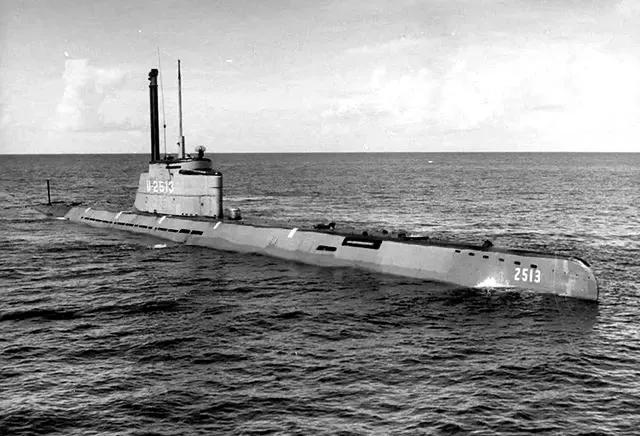From the beginning of the Battle of the Atlantic, submarines were the main force of the German Navy in attacking the enemy's sea transport lines.
On September 17, 1939, U-29 was in the sea on the west side of the English Channel, and the periscope reached out to look around. In the periscope, a large passenger ship of 10,000 tons appeared, and an aircraft escorted over the passenger ship.
The captain, Major Otto Shuhart, ordered the passenger ship to be tracked. The passenger ship changed course after spotting the submarine, and the speed was too fast. Because the submarine was so slow to navigate underwater, U-29 was unable to catch up with the passenger ship.
Otto Shuhart was just about to order the submarine to surface to chase the passenger ship when suddenly a small black dot appeared on the starboard horizon of the periscope. It turned out to be a huge aircraft carrier. Otto Shuhart was ecstatic.
It is the British Navy's aircraft carrier HMS Brave. U-29 slowly followed Brave. About 2 hours later, the U-29 submarine caught up with the aircraft carrier. Suddenly, the aircraft carrier changed course, exposing its long flank.
The U-29 submarine immediately surfaced to aim at the aircraft carrier and fired 3 torpedoes, then immediately dived into the water to evade the Blow of the British Escort Destroyer.
The aircraft carrier exploded 3 times in a row, and then, continuously. The aircraft carrier sank into the Atlantic Ocean, and 518 officers and men on board were buried in the belly of the fish.
British frigate destroyers swooped into the waters where U-29 was hiding and dropped depth charges. Many depth charges exploded next to the U-29. The submarine shook violently, but was not badly damaged.
Later, U-29 escaped the bomb zone with difficulty and returned to the submarine base.
The victory of the U-29 allowed Hitler to discover the true power of the submarine.
For the German Navy, Britain's Scarpa Bay was a sign of shame. Located in the Orkney Islands in northern Scotland, Scarpa Bay is a 340-hectare deep-water port.
Dönitz was bent on attacking Skapa Bay, but had the bitter lesson of two defeats in World War I. Dönitz did not dare to act rashly, and had been gathering intelligence on the Scapa military port. It was learned through intelligence that it was difficult to attack the Scapa military port: the flow speed of Scapa Bay reached 10 knots, the maximum underwater speed of German submarines was only 7 knots, and the submarines could not swim against the current. And the Scapa military port is very well defended.
On 11 September, Dönitz received important intelligence from the Air Force, which photographed British naval warships in the Straits of Scarpa, Flotta, Suissa, and Risha. In addition, the captain of U-16 learned through reconnaissance that he could break into Scapa Bay at the opening of the gates in the Hoksha Strait. Dönitz asked the Second Air Force to find a way to photograph the entrances to Scapa Port.
Through careful analysis of various intelligence, Dönitz found that there were 7 entrances to Skapa Bay, except for the Strait of Home, the other 6 entrances were equipped with anti-submarine nets, anti-submarine sheds and minefields, and there were also vigilance ships, through which submarines could not pass. From the south of the Strait of Home to The RamboRems there is a channel 15 meters wide and 1 meter deep, although the Strait of Home is blocked by shipwrecks, but it can pass through the gap.
Dönitz sent Captain U-47, Major Presley, on this daunting task.
In the early morning of October 13, Captain Plain commanded the U-47 submarine to dive into the sea and ordered the entire crew to carry out the combat mission of the voyage, and the sailors immediately cheered.
In the evening, U-47 surfaced and headed at full speed towards Scapa Bay. The moon had not yet risen, but the aurora phenomenon occurred, and the aurora illuminated the sea as if it were daytime.
U-47 continued to sail on water. Soon, the Home Waterway appeared. According to Luftwaffe reconnaissance, only the Strait of Home was poorly guarded. Because the waterway of the Strait of Home is narrow and curved, the water flow is very rapid, and the underwater is densely covered with huge reefs, which is a dangerous place. The British Navy sank 3 broken ships in the Strait of Home. U-47 successfully bypassed the first shipwreck and continued into the bay.
With the help of the rising tide, the U-47 submarine looked like it was about to bypass the second shipwreck, but the tide suddenly pushed the submarine to the right bank.
Plain ordered the left rudder to stop, the right rudder to advance at a low speed, and the submarine to turn to the left, and it took a lot of effort to get rid of the doom of the stranding.
At 00:27 on October 14, U-47 slowly sailed into Scapa Military Port. U-47 sailed 3.5 nautical miles in the water and did not find any targets. U-47 made a big circle toward Main Island.
